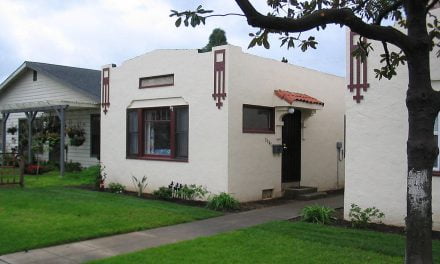If you’re a homeowner in San Francisco, please pat yourself on the back: your home has appreciated approximately 75% since 2012.
If you’re anyone else living in San Francisco, your rent payment has likely increased about 40%, according to Zillow’s Rental Index. Your income, on the other hand, has increased only 7% on average, according to the Bureau of Economic Analysis. For those low and middle-income workers in the Bay Area, who are rarely qualified to buy in the region, this mismatch in housing costs and income has created a serious problem. The exodus has begun, and one group of San Franciscans will be sorely missed — its schoolteachers.
Statewide, 83% of homes are out of reach of the average teacher’s salary, according to the United Educators Association for Affordable Housing (UEAAH). This sounds bad. However, it’s a lot better than the Bay Area, where over 95% of homes are out of reach for teachers. In San Francisco proper, 100% of homes are beyond reach for an individual living on a teacher’s salary.
As a result, teachers have been leaving San Francisco in droves. Some move to the suburbs and make the long commute in, while others move to other metropolitan areas of California. This school year in San Francisco, it was normal for 25%-30% of teachers to be new. Some turnover is normal, as nationwide, the average teacher turnover rate was 16% in 2013, according to the National Center for Education Statistics (NCES).
Generally, teachers change schools in search of better work conditions — cost of living is rarely cited as a reason for changing schools, since most teachers stay within the same school district even when they do move, according to the NCES. San Francisco and other high-cost areas of California are uncommon situations for teachers in the U.S.
Further, California is unique in its sheer geographical size. Teachers unable to meet the cost of living in San Francisco can move to, say, relatively cheap Sacramento, without having to apply for new credentials.
High teacher turnover creates undesirable student outcomes. It’s also bad for home sales — teachers who don’t plan on staying put and who cannot qualify for home purchases (or even rent in many cases) will not buy homes. California has 460,000 teachers (not counting postsecondary teachers), and they make up about 3% of all California workers.
The good news is educators are some of America’s most beloved workers. The plight of teachers in San Francisco has received some media attention in recent months, and there are a few organizations offering solutions.
Some limited, mostly short-term fixes follow.
Band-Aids for the wound
The Department of Housing and Urban Development (HUD) offers some assistance to teachers and others.
HUD’s Good Neighbor Next Door program gives certain municipal employees a 50% discount off the list price of a HUD home, provided they reside in the residence for at least 36 months. Eligible employees include:
- pre-kindergarten through 12th grade teachers;
- law enforcement officers;
- firefighters; and
- emergency medical technicians.
The HUD program is only available in certain areas, which you can search here. However, your client getting to participate in this program is very much a long shot. At the time of this writing, there were no eligible homes listed in San Francisco and the single home listed in Los Angeles can be acquired by lottery amongst other eligible homebuyers. Still, inventory changes weekly, so it may be worth letting eligible clients know.
The UEAAH spearheads another effort to match up educators with housing in the Bay Area. This grassroots nonprofit consists of residents who are willing to advocate for housing on behalf of local teachers. In the past, this has included:
- helping teachers negotiate with landlords for lower rents;
- working with banks to provide down payment assistance and below market mortgage rates; and
- advocating for government policies to provide teachers with housing subsidies.
Like members of the military who receive a monthly housing allowance, UEAAH wants to see this benefit extended to teachers. And unlike other short-term solutions like calling up individual landlords, or hoping to win the lottery on a HUD house, a federal housing allowance for teachers has the potential to be a permanent fix.
Midland, Texas, began offering a teacher housing allowance in 2013 following a jump in housing costs and a drop in teacher applicants. One year later, they received six times as many applications as needed.
A teacher allowance might be a solution for teachers living in pricey areas like the Bay Area. However, teachers are not alone in their struggle to buy or rent in today’s housing market, where home prices continue to rise much faster than incomes. A better fix for all low- and middle-income households is to allow denser, higher housing to be built in desirable areas (read: near jobs). These organizations are working to that end across California, and good luck to them.















I live in SF near Glen Park. Home across the street from me was listed at 750k sold around 1 million. I spoke with the investor that purchased it he told me renovations they plan will cost around 200k. Six months after renovations were complete the investor sold the home for 2.5 million , sale just completed the other day. So a home originally appraised around 750k gets flipped for 2.5 million almost a 300% profit to the flipper. This has to be artificial appreciation this can’t be sustainable.
I believe advocating for teacher subsidies will have unintended consequences for potential homeowners in the same income boat. The benefits would be good for teachers but I believe it would not do anything to slow the rise in housing/rental prices which is what needs to be done. As a matter of fact, I believe it would exacerbate the problem. Home and rental prices could continue their stellar rise since the government would be footing part of the bill instead of allowing the natural course of unaffordability to play out. If there are less people who can afford a house or a rental, then sellers/rentals will have to lower their price. Sellers will keep raising the price as long as someone is willing to pay–whether the “subsidy” is coming from the government or from mom and dad, the result will be the same. Teaching is a noble occupation but our healthcare worker, electrician, plumber, etc. whom may be in the same income category, are also important and are also finding themselves in the same predicament. Should they also be subsidized?